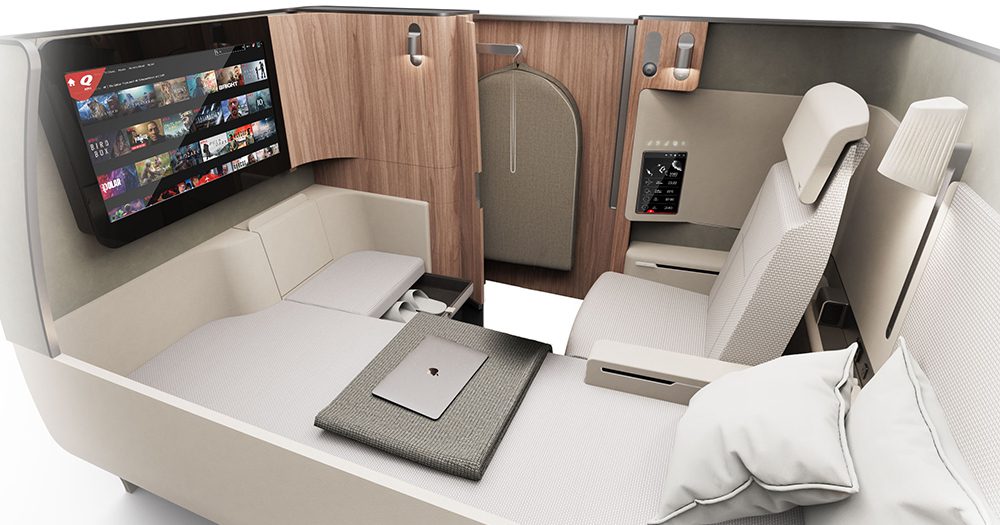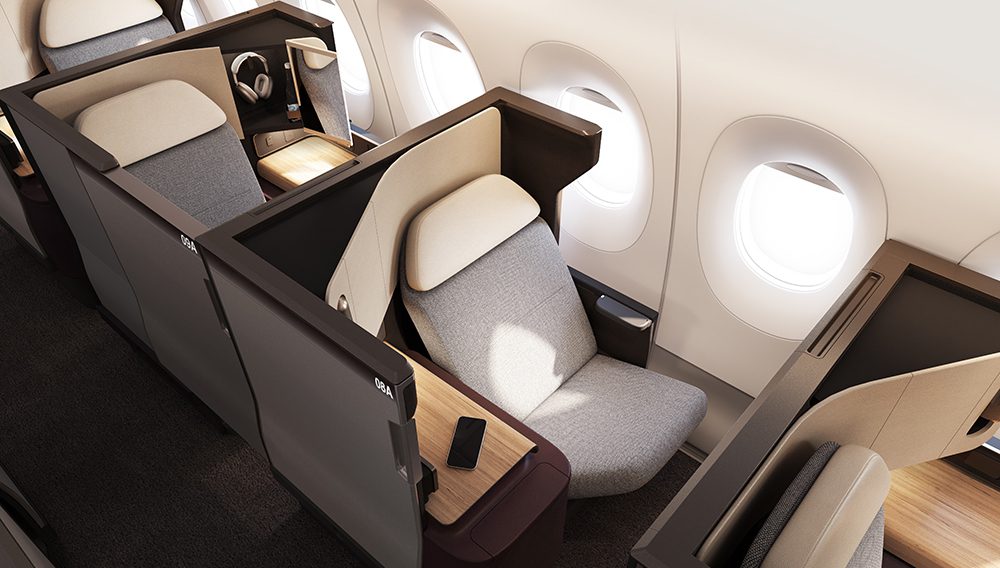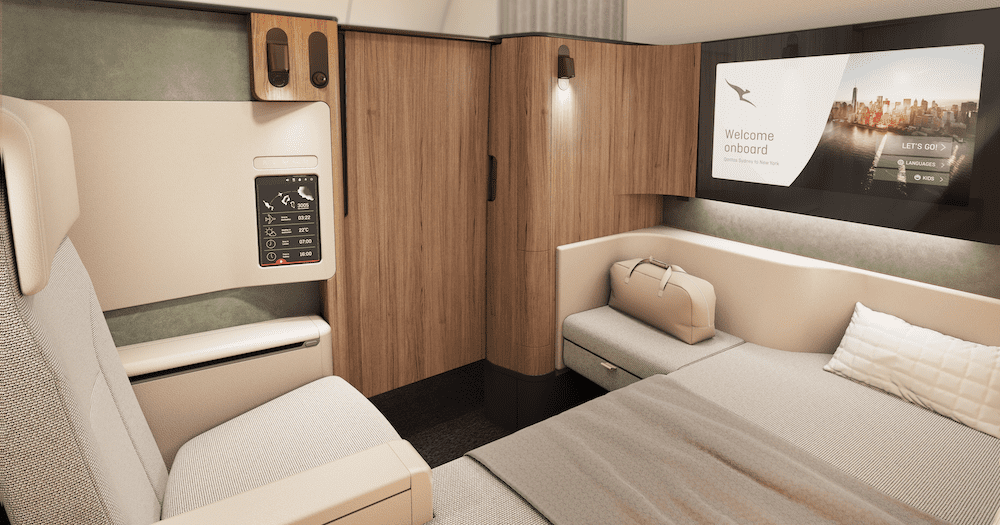Qantas has unveiled new concepts for its First Class and Business Class A350 cabins for its forthcoming direct flights to New York and London.
Utilising Qantas’ A350 aircraft, the first non-stop services between Australia’s east coast and New York and London are due to commence in late 2025.
But following on from an initial glimpse of what the cabins could look like in May 2022, excitement for ‘Project Sunrise’ is continuing to build.
Created for the first time by a mix of aviation specialists, designers, and scientists from Sydney University, the flagship cabins will firstly offer more space thanks to the reduced seating capacity on QF’s A350s.
While other carriers offer 300 seats in their 350s, Qantas will fly a maximum of 238 passengers on their aircraft.
In First Class, cabins will feature an extra-wide fixed bed, separate recliner chair, wardrobe, dining table for two and 32” ultra-high definition TV.

Business Cabins will also offer sliding doors for suite-like privacy featuring a two-metre bed, lots of storage, a cushioned ottoman, an 18” ultra-high definition touch screen TV, and a large dining table.
The A350 premium cabins will comprise six First suites in a 1-1-1 configuration and 52 Business Suites in a 1-2-1 configuration.
“Qantas has been the leader in opening up new long-haul flights for most of our history, and we’re bringing everything we’ve learned, both technically and in terms of passenger comfort, to Project Sunrise flying,” Qantas Group CEO Alan Joyce said.
“We think our A350 cabins have the most sophisticated and thoughtful design of any airline, combining cutting-edge technology with sleep research to shape the look and feel for what is effectively a new era of travel.”
Both cabins will offer wireless charging of devices, while the A350 will offer free “high-speed” wi-fi and Bluetooth connectivity for all customers.

Every element created for Qantas
“We began designing this aircraft cabin five years ago, working with Airbus and Qantas to maximise space, as well as creating a tailored lighting program that will influence mood and sleep patterns,” said David Caon, the Australian designer who worked with Qantas on the cabins.
“All the design and service elements will work together to significantly improve inflight comfort, convenience and health and well-being and help minimise the old nemesis of jetlag.
“Every element has been created for Qantas, from the reading light right down to the fabrics, to ensure that passengers spend their journey in refined comfort.
“There are also a number of storage design elements to keep personal items within arm’s reach so the space can be personalised by each individual passenger to feel just like they are in their own bed at home.”
Qantas will release details of a new Wellbeing Zone for all passengers along with the Premium Economy and Economy cabins in the coming months.






